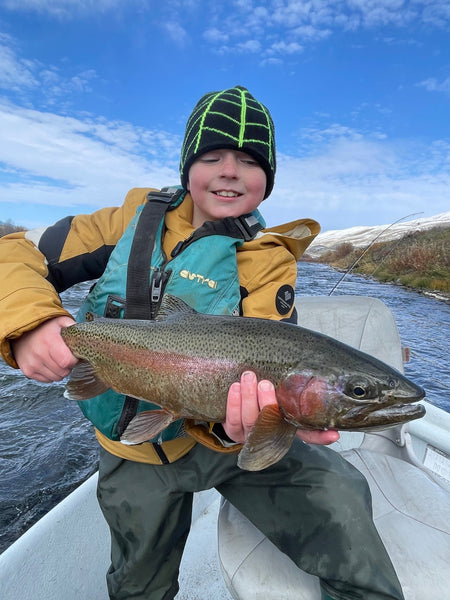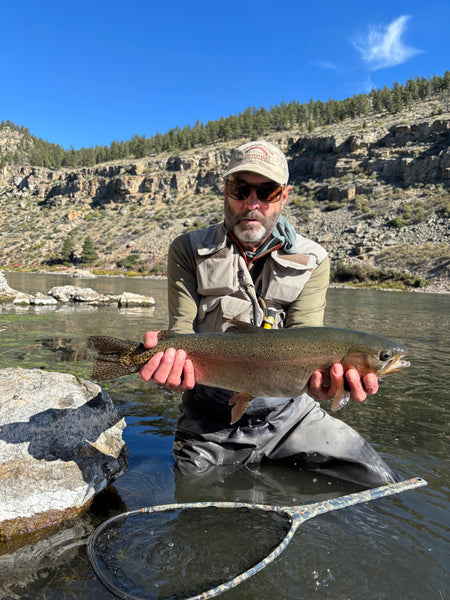Yellowstone National Park Bans Felt Wading Boots Beginning 2018 Season
--------------------------------------------------------------------------
YELLOWSTONE NATIONAL PARK NEWS RELEASE
--------------------------------------------------------------------------
Felt sole boot ban and new boating season
Protect Yellowstone from aquatic invasive species
MAMMOTH HOT SPRINGS, WY –Aquatic invasive species (AIS) could have devastating ecological, economic, and recreational impacts on Yellowstone National Park. They are costly to manage and extremely difficult to eradicate. Due to the urgent need to prevent these destructive species from entering the park, felt sole waders and boots worn by anglers will be banned permanently starting in 2018. The park will also implement a new boating season.
Felt Sole Ban
- Felt sole waders and boots will be banned because they can carry microscopic organisms even after cleaning.
- Rubber sole boots will be allowed. They trap fewer organisms than felt and can be cleaned with water and a scrub brush.
- Read the park’s fishing regulations to learn more about the ban.
Boating Season
- Boats will be allowed to enter park waters from 7 a.m. on Saturday, May 26, until 5:30 p.m. on Sunday, November 4.
- All watercraft are required to have a boat permit and a Yellowstone AIS inspection before launching in the park. Watercraft include, but are not limited to, power boats, sail boats, canoes, kayaks, and angler float tubes. Permits and inspections are available seven days a week between 8 a.m. and 4:30 p.m. at various locations in the park.
- If a boat does not pass the AIS inspection, it will not be allowed to enter park waters.
- Instituting a boating season guarantees the park will have staff to provide timely boat inspections.
Take action. Ensure that you don’t transport AIS to Yellowstone and that your watercraft will be permitted to launch:
- Clean all plants, animals, mud, sand, and other debris from your boat, anchor, boots, and equipment. Use high-pressure, hot (120-140F) water if possible.
- Drain all water from your boat including the motor, bilge, livewell, and other compartments before you arrive. Leave drain plugs out during transport. Do not dump water or organisms from one water body into another.
- Dry all compartments and equipment in the sun for five days.
Watch a video that demonstrates this process.
2 Responses
Doug Brearey
As a retired biologist and long time fish guide, now living of the Shields River, I can say that there is no way anybody will ever be able to stop this. Maybe they can slow it down but that is it. Just like trying to make the Shields River a Cutthroat stream when it is a Brown Trout fishery. The Park has never cared about fishing and never will. If they can eliminate it completely that would make life much easier for them. My first trip to the park was in 1963, “Rangers” were Naturalists then, all they are now are cops controlling crowds and people. Too bad, too many rules and regs. Are they planning on killing all waterfowl? How about the loading bunks on boats, clothing, swimsuits etc. Hate to be negative but the truth hurts. If you don’t think I am correct follow the story of Lake Trout in Yellowstone Lake. Good luck fishing equipment is expensive enough to have to have multiple copies will be an impossibility. The fish and guide industry is gonna suffer tremendously.
John Schilling
Madison River Outfitters Well we’ve been getting some very good comments pro & con about the felt boot ban and the gear cleaning process. This is strictly my personal opinion. Even with rubber soled boots you can not just worry about cleaning the soles. You’ll need to also concentrate on cleaning every nook and cranny of the boot INSIDE and OUT. You’ll also need to clean your waders and any other item that comes in contact with the water. Just washing your gear does not guarantee that you are killing these organisms. Just washing and drying may reduce the organisms but does not eliminate them all together. From research I did a few years ago the best advice I found was to clean and then freeze your waders and boots. Not a great option if you’re fishing on a daily basis. If so you’ll need more than one pair of boots and waders. That can get expensive real fast. The other thought is to have separate waders and boots for each river system. Again this can be an expensive option. Then as some say how are we to control the possible contamination from migratory water fowl. Ok I’m rambling now. I know that I don’t want these things in our rivers and that I for sure don’t have an absolute solution. For now all we can do is scrub your gear well and hope that this will have a positive effect against these beast.
Leave a comment
Comments will be approved before showing up.
Also in Madison River Fishing Report - Upper Madison River Fishing Report - Greater Yellowstone Area Fishing Reports

Madison River Outfitters Fishing Report for 10/21/2025
This is the Last Report of the Year! Have a Great Winter, and We'll See You All This Spring!!




John Schilling
Author
Manager